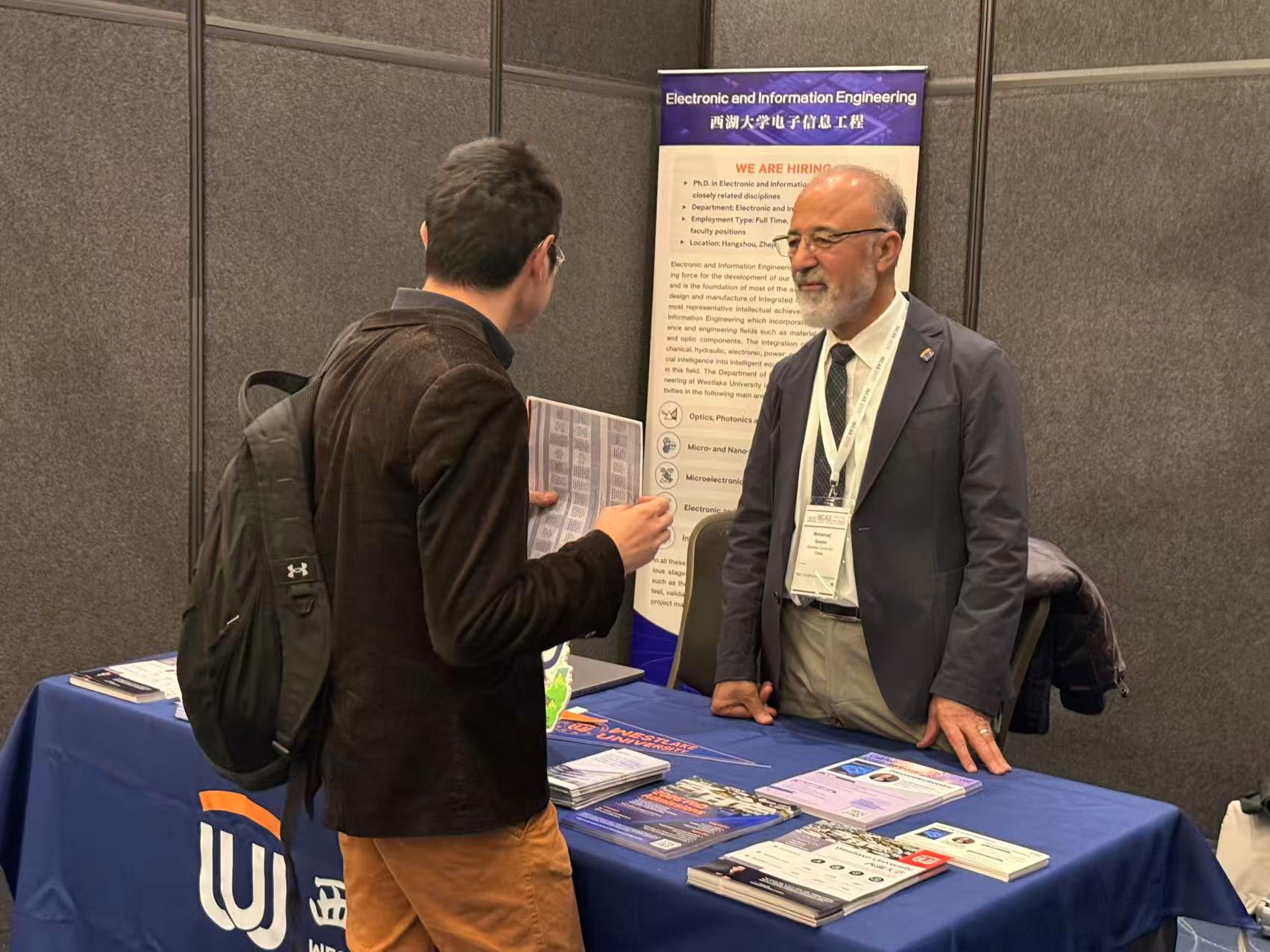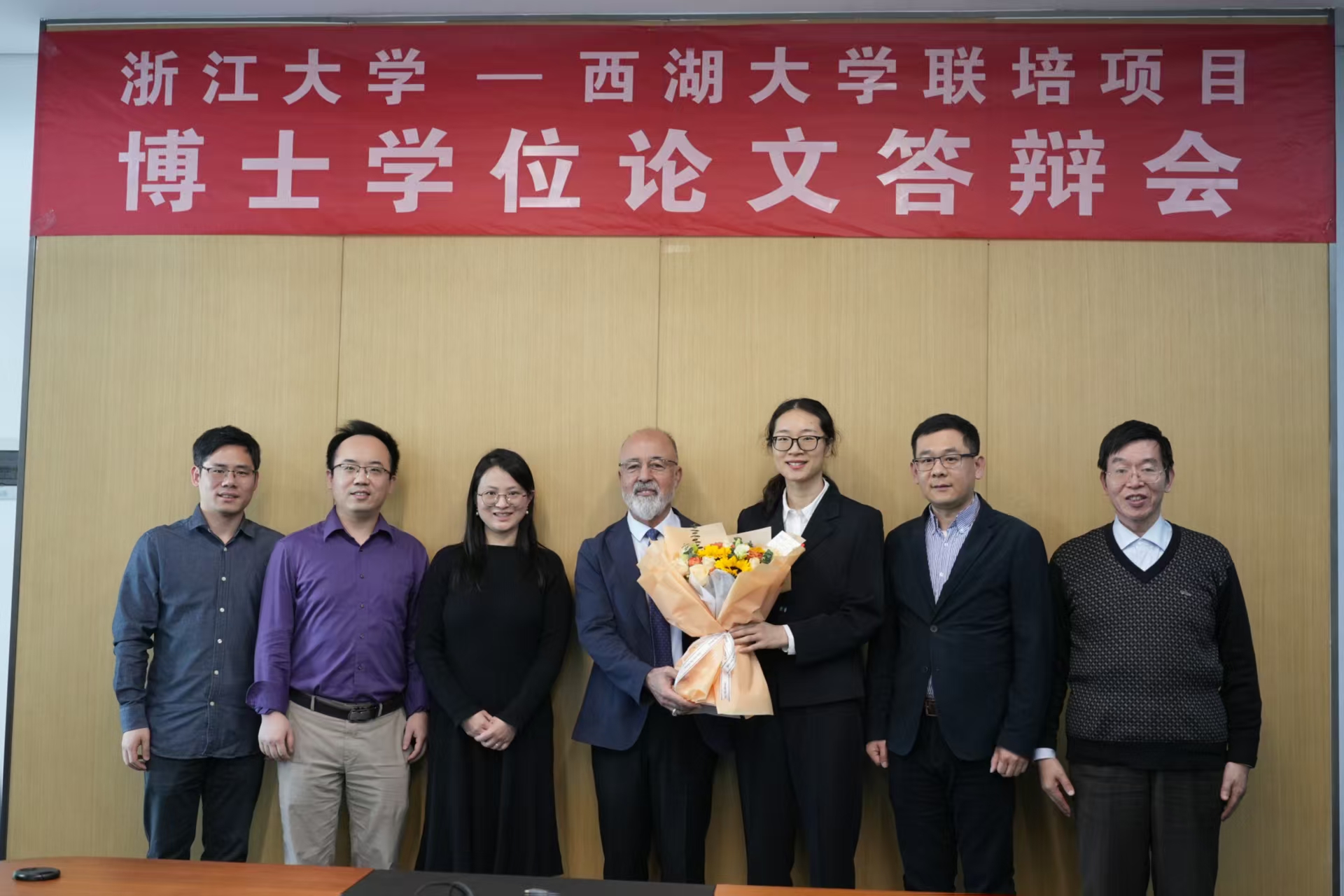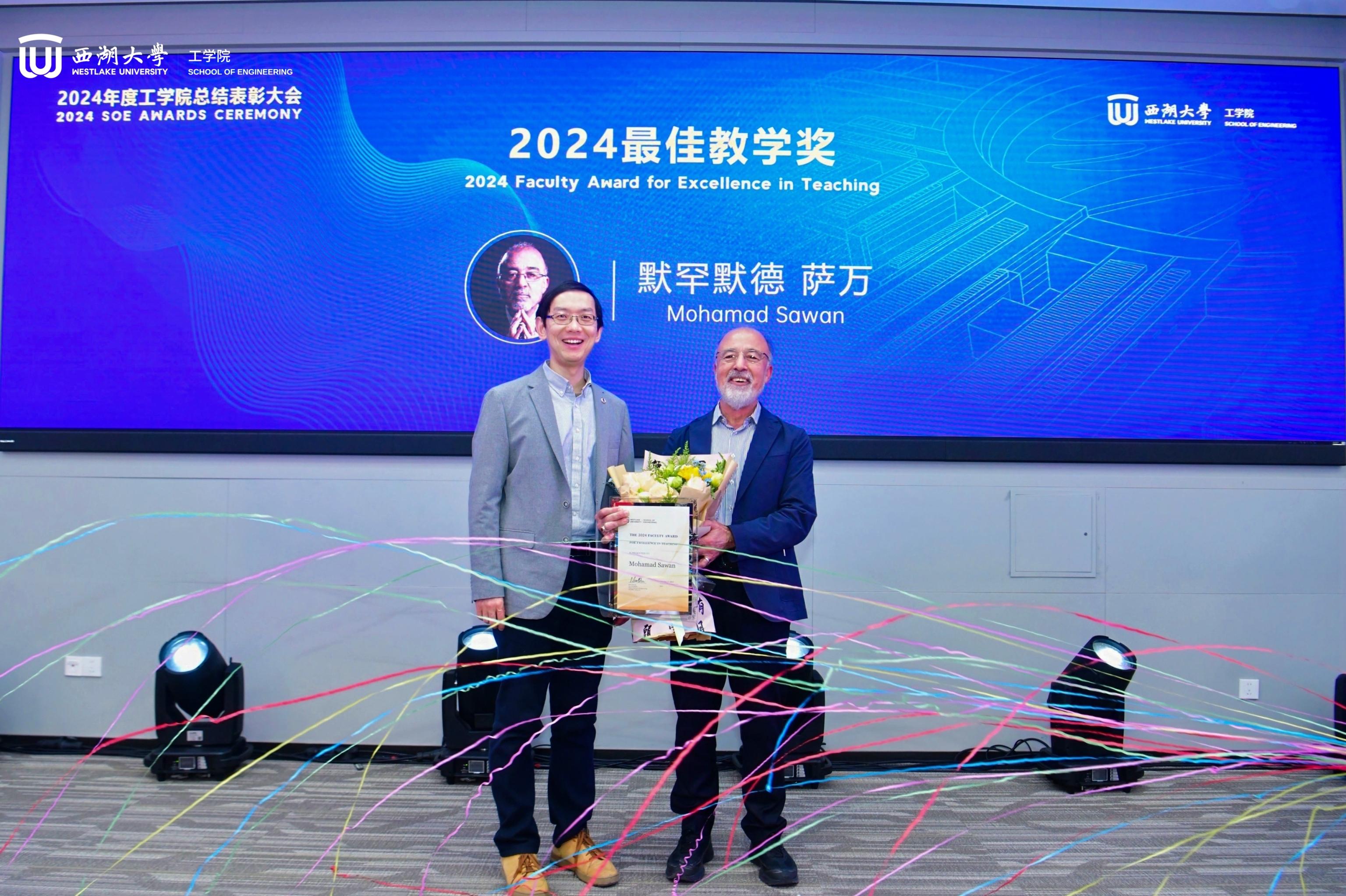Global responses to pandemics emphasize the critical need for biosensors to monitor outbreaks during major public health events. The Monkeypox Virus (MPXV) pandemic is spreading, MPXV infections emphasize the need for rapid and sensitive pathogen diagnostics. This action is crucial for guiding timely and effective clinical treatments and vaccination strategies. However, current detection technologies, including real-time polymerase chain reaction tests (real-time PCR) and isothermal amplification-related methods, are flawed because they require rigidly structured environments and well-trained personnel to perform the precise steps. Therefore, an easy, rapid, and automated biosensing method to efficiently detect MPXV in clinical samples is required.
Recently, CenBRAIN Neurotech Center of Excellence proposed a cSP-based multiviral biosensing strategy capable of detecting various pandemic strains, such as MPXV, the latest coronavirus disease (COVID) variants, and influenza A protein, to extend its versatility. The proposed cSP-modified FO-BLI biosensor has a high potential for rapidly and accurately detecting MPXV antigens, making valuable contributions to epidemiological studies.

The work has been published in the Journal of Pharmaceutical Analysis. Xixi Song and Ying Tao, research assistants of our center are the first authors of the paper. Mohamad Sawan, Chair Professor of Westlake University, and Sumin Bian, Research Associate Professor of Westlake University are the corresponding authors. Congratulations to them for this contribution.
Research Highlights
1. A recombinant protein for site-directed antibody immobilization onto silica surfaces.
2. A rapid and sensitive optical biosensor for detecting monkeypox virus in 14 min with no cross-reactivity.
3. A recombinant protein-based multi-virus biosensing strategy for various pandemics.
Reference
SONG X., TAO Y., BIAN S., SAWAN M., “Optical Biosensing of Monkeypox Virus using Novel Recombinant Silica-Binding Proteins for Site-directed Antibody Immobilization”, On line on Journal of Pharmaceutical Analysis, 2024.
https://www.sciencedirect.com/science/article/pii/S2095177924000923
Abstract
The efficient immobilization of capture antibodies is crucial for timely pathogen detection during global pandemic outbreaks. Therefore, we proposed a silica-binding protein featuring core functional domains (cSP). It comprises a peptide with a silica-binding tag designed to adhere to silica surfaces and tandem protein G fragments for effective antibody capture. This innovation facilitates precise site-directed immobilization of antibodies onto silica surfaces. We applied cSP to silica-coated optical fibers, creating a fiber-optic biolayer interferometer (FO-BLI) biosensor capable of monitoring the Monkeypox Virus (MPXV) Protein A29L in spiked clinical samples to rapidly detect the MPXV. The cSP-based FO-BLI biosensor for MPXV demonstrated a limit of detection (LOD) of 0.62 ng/mL in buffer, comparable to the 0.52 ng/mL LOD achieved using a conventional streptavidin-based FO-BLI biosensor. Furthermore, it achieved LODs of 0.77 ng/mL in spiked serum and 0.80 ng/mL in spiked saliva, exhibiting no cross-reactivity with other viral antigens. The MPXV detection process was completed within 14 min. We further proposed a cSP-based multi-virus biosensor strategy capable of detecting various pandemic strains, such as MPXV, the latest coronavirus disease (COVID) variants, and influenza A protein, to extend its versatility. The proposed cSP-modified FO-BLI biosensor has a high potential for rapidly and accurately detecting MPXV antigens, making valuable contributions to epidemiological studies.
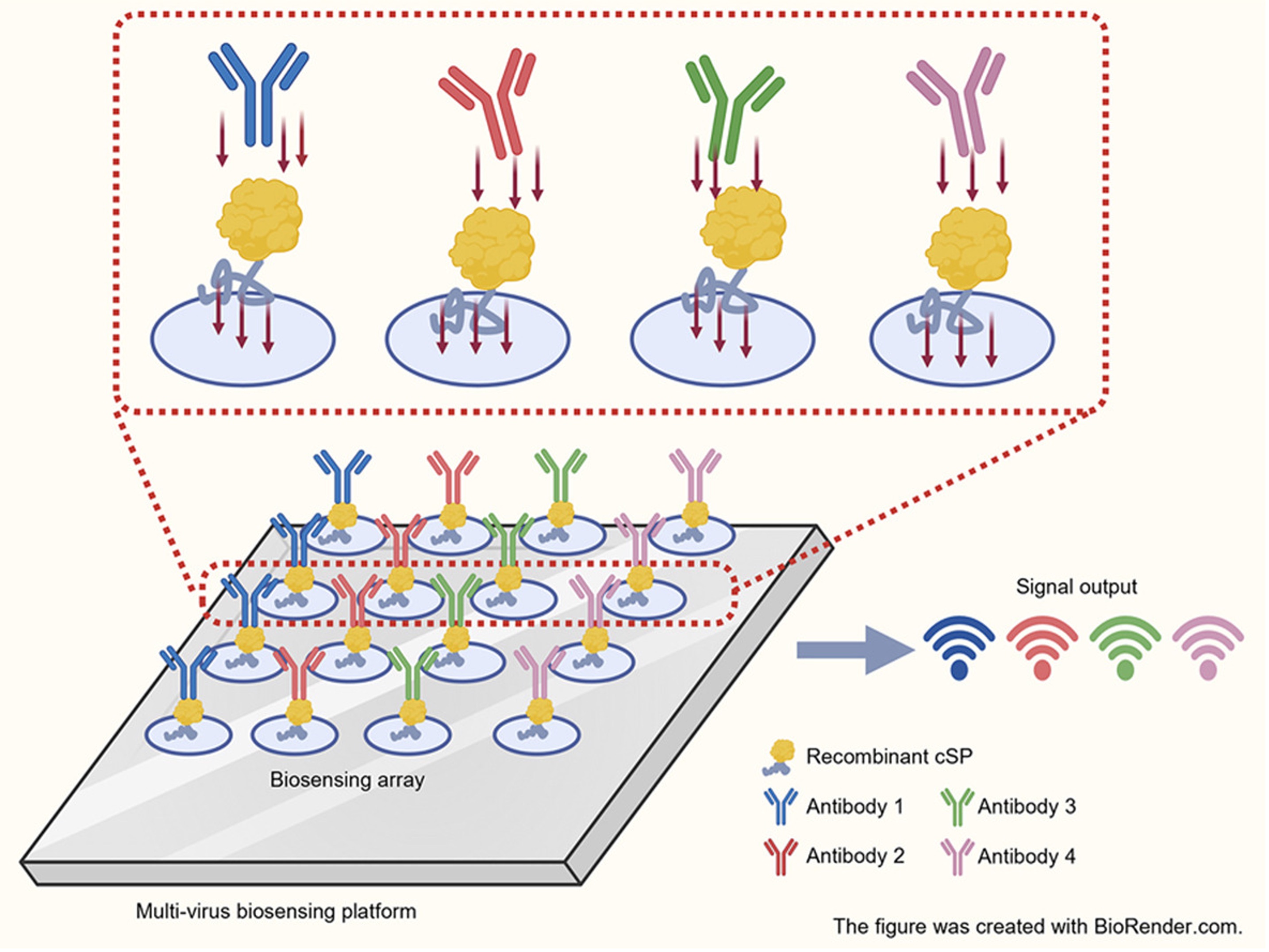
Fig.1. Schematic diagram of the recombinant cSP protein adsorbing to a silica biosensing interface and capturing antibodies.
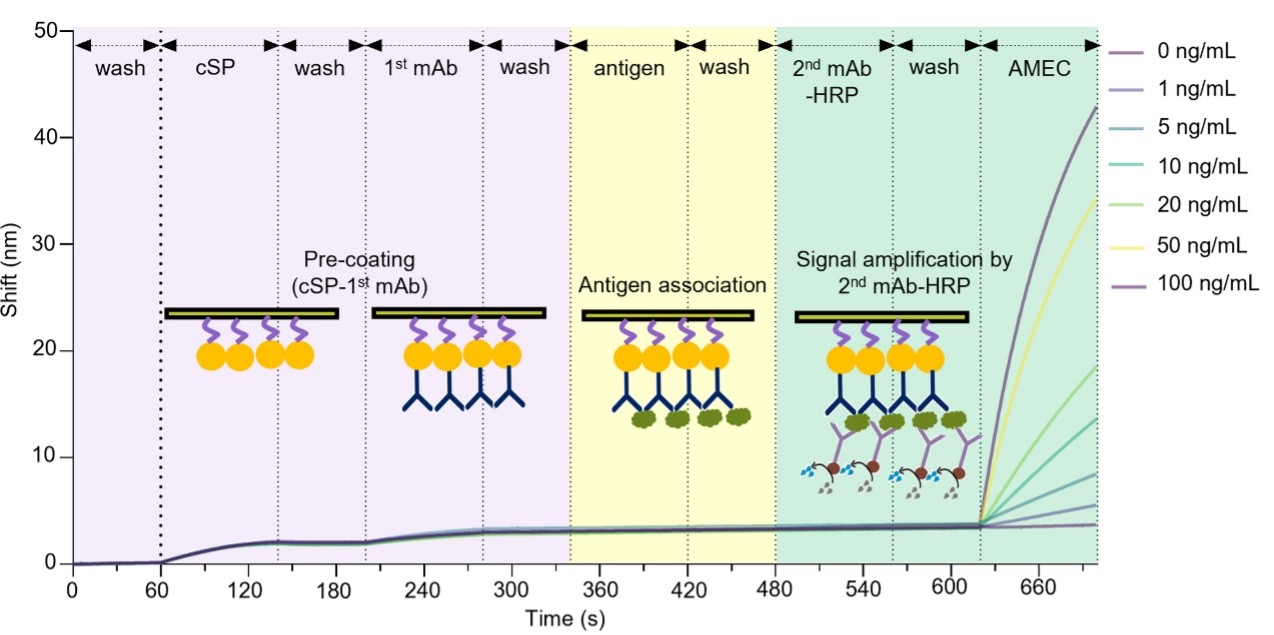
Fig.2. Flowchart of the cSP-based MPXV detection in buffer and spiked clinical samples.
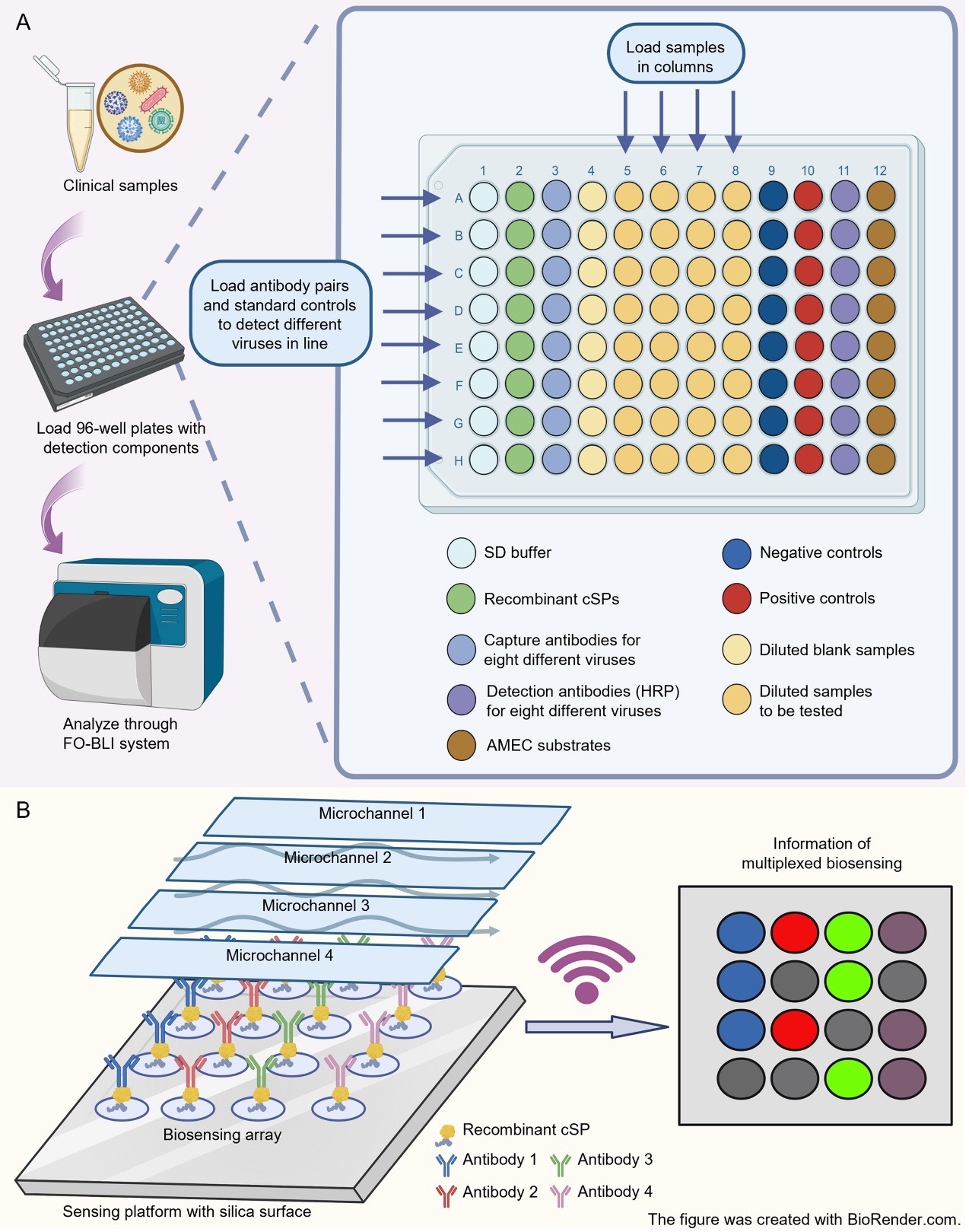
Fig.3. Future perspective for multi-virus detection using the cSP-based optical biosensor. (A) The illustration depicts the sequential steps of loading antibodies, samples, and standards on a fiber-optic biolayer interferometer (FO-BLI) system. The entire assay supports the simultaneous detection of eight pathogens in four samples in less than 15 min. (B) The illustration shows high-throughput immobilization of antibodies using recombinant cSP on a biosensing platform with silica surface for multiplexed virus detection.




